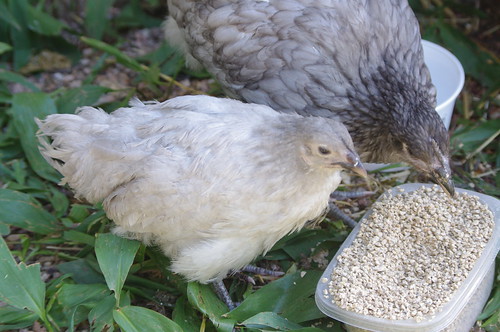 |
| Blue Orchard Bee. Photo courtesy CrownBees.com |
I recently finished an article for Urban Farm magazine on
the topic of Orchard Mason Bees.
I’ve been
trying to talk K into honeybees, without success. I did like the idea of
harvesting honey, but found the idea of my own collection of pollinators to be a bigger part of the appeal.
Mason bees
are benign (non-stinging), super-pollinators, native to the United States (honey bees are
not), but they don’t produce honey. They are beneficial insects for anyone who
has fruit trees and plants that benefit from pollination. One orchard mason bee
can do the pollinating work of 100 honey bees. They can increase the cherry or
apple yield by two to three times. They’re easy to house, and the more I learned
about them, the more impressed I was.
One thing I
found interesting was that when the female orchard bee lays her eggs (each with
its own little provision pack of pollen) she lines them up and
compartmentalizes them in a tube or reed. She may lay about six eggs per tube,
lined up with female-to-be eggs in the back, and males-to-be toward the front.
The males emerge first in the spring (and are slightly expendable), and hang
around waiting for the females to emerge. The males live only long enough to
breed, while the female does all the housekeeping and egg-laying for her
specific tubes, then dies after about six weeks.
But the new
bees’ emergence isn’t a matter of gestation, it’s a matter of temperature and
timing. And this is what I think is really crafty of these industrious little
insects: They emerge when the temperature is around 55 degrees which,
coincidentally, is when the first of the fruit trees begin to bloom and make
pollen available.
Sometimes
the careful evolutionary engineering of nature is just a little breathtaking.
It’s as if you can catch glimpses of the fingerprints of a master plan.
Everything is interconnected and fits together.
That web is
beautiful, whether spun of the carefully timed emergence of hard working bees,
or the practicality of hens who act as natural pest control. This time of year, winter stills
the garden and the interconnected threads are a little harder to see. But they
are there, below the surface: Those small bees, nestled in a straw-like tube,
are tucked away for winter, waiting, just as the fruit trees lie dormant,
though it doesn’t appear that anything at all is happening.
This, I
think, is a reminder to me to be patient. I am always anxious this time of year
for winter to be moving along, seed catalogs to arrive and spring to return. Sometimes, though, when it doesn’t
seem like anything is progressing, there is perfection unfolding beneath the
surface. The point is to take pleasure in the stillness and steadiness.
Ah, the
philosophy of orchard bees. Monumental and miniscule at the same time.
(Special thanks to Dave Hunter for the information about the
bees. You can learn more at his web site, CrownBees.com.)

























